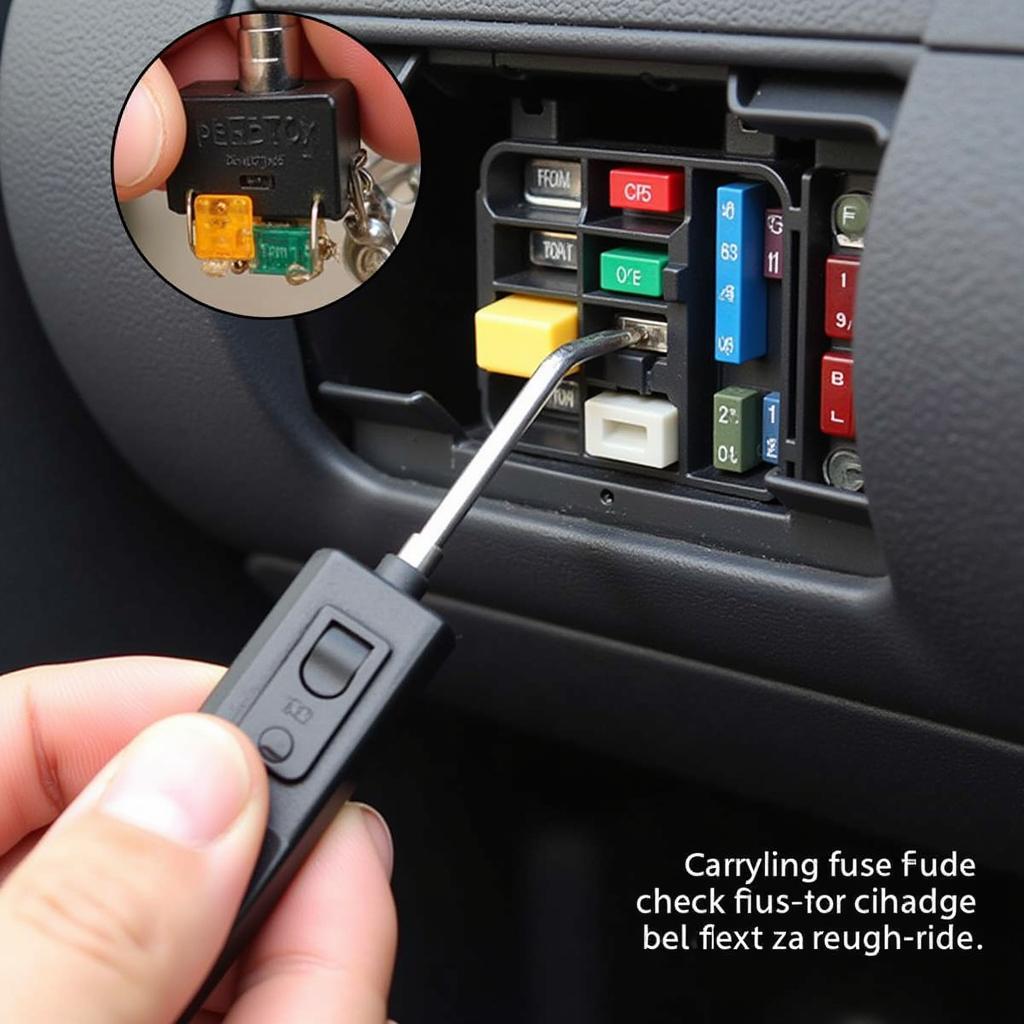Experiencing car electrical problems after a rough ride? This isn’t uncommon. A bumpy journey can jolt connections loose, damage wiring, and even affect sensitive electronic components. This article will guide you through diagnosing and potentially fixing these issues, whether you’re a car owner, a mechanic, or an automotive technician.
After a particularly jarring off-road adventure or even just navigating a pothole-ridden city street, your car’s electrical system might start acting up. Don’t panic! This article will delve into the common electrical problems that can arise after a rough ride and provide practical solutions. It’s possible that your brand new car may have similar problems to problem with brand new car.
Why Do Electrical Problems Occur After a Rough Ride?
The constant vibrations and jolts during a rough ride can wreak havoc on your car’s electrical system. Everything from loose connections to damaged sensors can be a consequence. Understanding the underlying causes is crucial to effective troubleshooting. Sometimes these problems can be as simple as loose wiring, other times they can be more complex, such as with typical problems with old car stereos.
Common Culprits: Loose Connections and Damaged Wiring
Loose connections are the most frequent electrical gremlins after a rough ride. The bumps and vibrations can dislodge wires from their connectors, interrupting the flow of electricity. This can lead to anything from a flickering headlight to a complete system failure. Similarly, damaged wiring, often caused by chafing against sharp metal edges during the jostling, can short-circuit or completely sever the electrical connection.
Diagnosing Car Electrical Problems After Rough Ride
Diagnosing these issues requires a systematic approach. Start by checking the most obvious points, such as fuses and relays. If those are intact, move on to inspecting wiring harnesses and connectors for signs of damage or looseness. Some problems might rank higher than others in terms of frequency or severity, as discussed in this car problems ranking.
How to Check Fuses and Relays
Fuses are the first line of defense against electrical overloads. Locate your car’s fuse box (usually under the dashboard or in the engine compartment) and consult your owner’s manual to identify the fuse associated with the malfunctioning component. Look for a broken filament in the fuse. Relays, which control high-current circuits, can also be affected by rough rides. Swap a suspected faulty relay with a known good one to test its functionality.
 Checking Car Fuses and Relays
Checking Car Fuses and Relays
Inspecting Wiring Harnesses and Connectors
Carefully examine wiring harnesses for signs of chafing, cuts, or exposed wires. Pay close attention to areas where the harness passes through metal brackets or near moving parts. Check connectors for looseness or corrosion. A simple wiggle test can often reveal a loose connection. Even celebrities like Hailey Fowler experience car problems, as highlighted in hailey fowler car problems.
Fixing Common Electrical Problems
Once you’ve identified the problem, fixing it might be simpler than you think. Tightening a loose connection or replacing a blown fuse can often resolve the issue. However, more complex problems, such as damaged wiring, might require professional help.
DIY Fixes vs. Professional Help
Simple fixes like replacing a fuse or tightening a connection are usually within the capabilities of a DIY enthusiast. However, if you’re uncomfortable working with electrical systems, or if the problem involves complex wiring repairs, it’s best to consult a qualified mechanic. Sometimes older vehicles have specific problems like those found in the 1998 lincoln town car common problems.
Preventing Future Electrical Problems
Prevention is always better than cure. Regularly inspecting your car’s electrical system, securing loose wiring, and protecting exposed wires can help prevent problems down the road.
In conclusion, car electrical problems after a rough ride can be frustrating but are often manageable. By understanding the common causes, employing a systematic diagnostic approach, and taking preventative measures, you can keep your car’s electrical system running smoothly. Contact AutoTipPro at +1 (641) 206-8880 or visit our office at 500 N St Mary’s St, San Antonio, TX 78205, United States for further assistance. We specialize in solving Car Electrical Problems After Rough Rides.






Leave a Reply